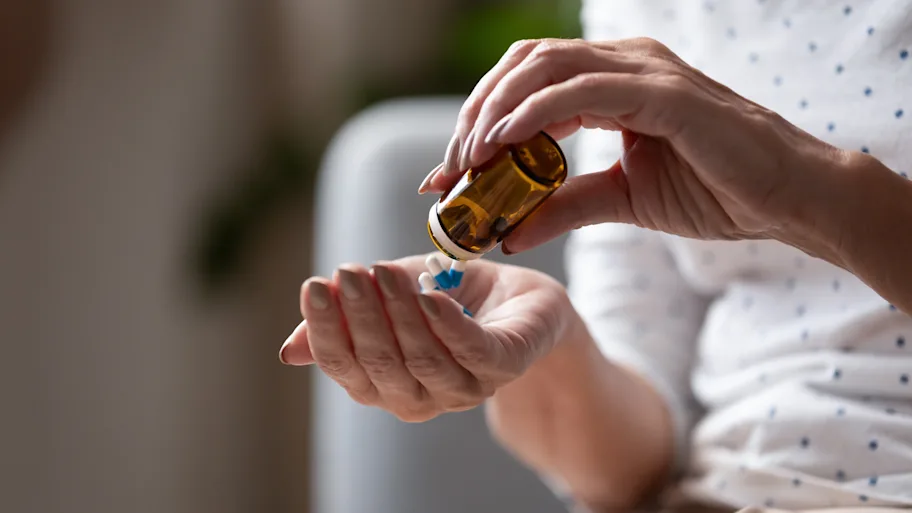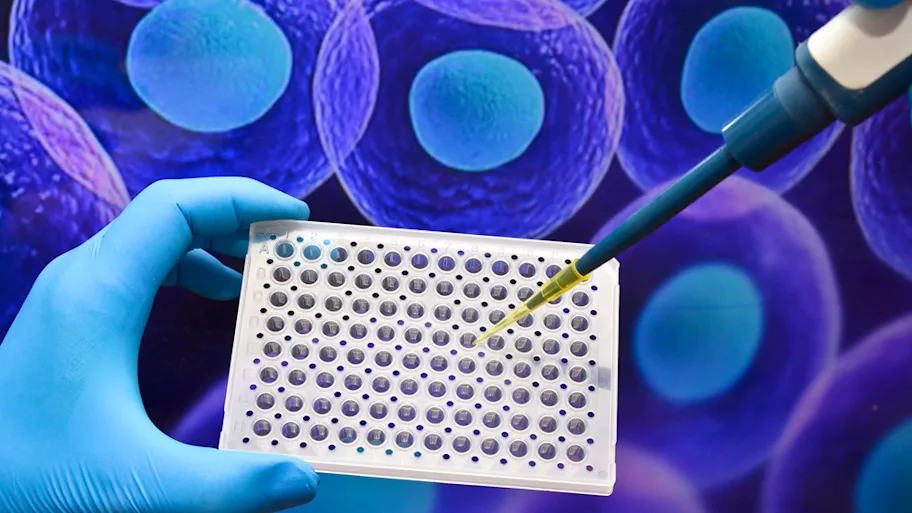
- Science News
- Featured news
- Scientists develop finger sweat test to detect antipsychotic drugs in patients
Scientists develop finger sweat test to detect antipsychotic drugs in patients
by Angharad Brewer Gillham, Frontiers science writer

Maintaining a regimen of antipsychotic drugs can be difficult, but going off them unexpectedly can have disastrous health consequences for patients. Traditionally, monitoring patients on these drugs involves blood tests, which can be painful and time-consuming. A quick, non-invasive finger sweat test newly developed by scientists could replace these blood tests and make patients’ lives easier.
Antipsychotic drugs treat incredibly vulnerable patients. Maintaining a treatment regimen is difficult for many patients, but not taking the medication is associated with a higher risk of poor health outcomes. These drugs are also very powerful with strong side-effects, and blood tests are often used to calibrate a patient’s dosage and confirm that they are taking the recommended dose.
However, blood tests are invasive and potentially uncomfortable. Scientists have now discovered a way to test the levels of common antipsychotic drugs in the sweat from patients’ fingerprints, offering a quicker, more comfortable, and more convenient alternative to blood draws for patient monitoring.
“Our test offers patients a quick and dignified way of showing commitment to antipsychotic treatment,” said Katherine Longman of the University of Surrey, first author of the study in Frontiers in Chemistry. “This non-invasive approach can also be adapted to fit other therapeutic regimes.”
A test at your fingertips
The scientists already knew that some drugs could be detected in the sweat from a fingertip, without the requirement for specialist personnel and with easier storage and transportation. Finger sweat samples, unlike blood, can be transported at ambient temperature.
To test whether antipsychotic drugs could also be detected in sweat, they recruited 60 patients receiving clozapine, quetiapine, or olanzapine, as well as 30 negative controls. 11 patients taking clozapine also agreed to supply blood samples so that the correlation between finger sweat indicators and blood indicators could be tested. Patients were asked to report their dosage and the most recent dose they had taken.
The researchers collected samples both before and after handwashing, as hands that have been washed are considered to give a better picture of the eccrine sweat that comes from fingertips. Patients pressed their fingertips against porous paper for 30 seconds. These samples were then collected and analyzed using liquid chromatography mass spectrometry.
Corresponding author Prof Melanie Bailey, based at the University of Surrey, and the team also asked six people who did not take the drugs to handle whole and crushed pills and then give fingerprints. This control checked whether the test could be compromised by patients touching the medication. The scientists were able to confirm the reliability of the method and to distinguish between the presence of the drugs in patients’ sweat and the presence of the drug on patients’ hands.
Download original article (pdf)
Fingerprinting medication
The test detected the presence of antipsychotic drugs accurately in every patient taking them. It was most effective for clozapine, where a pilot analysis of a sub-group of patients found that the levels of clozapine metabolites in finger sweat correlated with the levels found in blood. This, the researchers said, raises the exciting possibility that the test will eventually be able to quantify the levels of clozapine in a patient’s sweat instead of just detecting them.
The test also consistently detected quetiapine, although this was a small group of patients. The signal for olanzapine was less strong, but all patients who took olanzapine tested positive on at least one fingerprint provided before washing their hands. They were also taking lower doses than patients on the other drugs.
Although the test as used in the study included samples taken after washing hands, which adds time and facilities needed for the test, the efficacy of the tests on fingerprints taken from unwashed hands suggested this wasn’t necessary. Removing this step would make it even quicker and easier for laypeople to carry out the tests.
“We are currently exploring methods to quantify the level of drug in a fingerprint and the optimum sampling time,” added Bailey. “We are also very interested to see whether fingerprints can be used to diagnose disease – for example from the metabolites that are deposited in a fingerprint sample.”
REPUBLISHING GUIDELINES: Open access and sharing research is part of Frontiers’ mission. Unless otherwise noted, you can republish articles posted in the Frontiers news site — as long as you include a link back to the original research. Selling the articles is not allowed.






